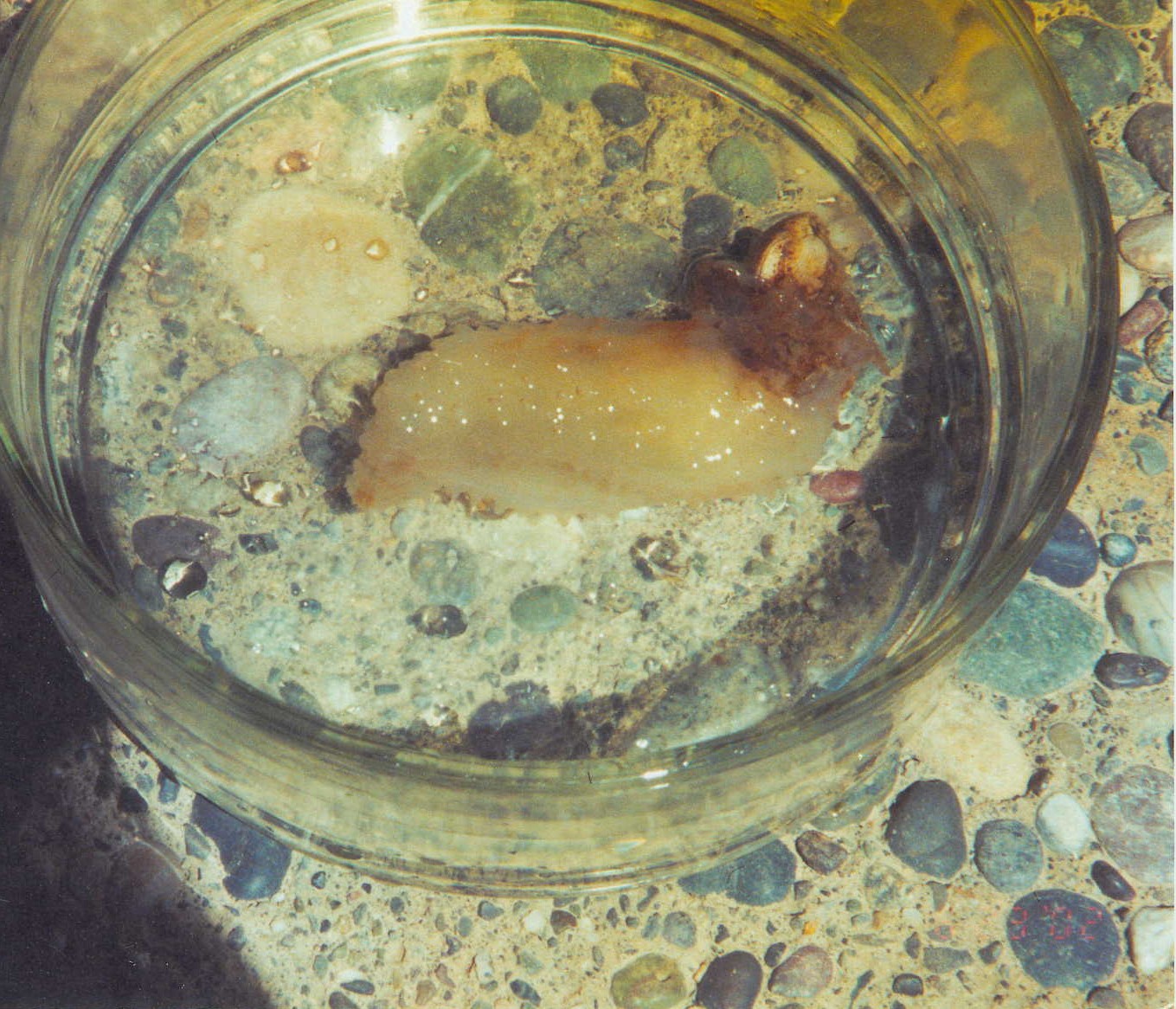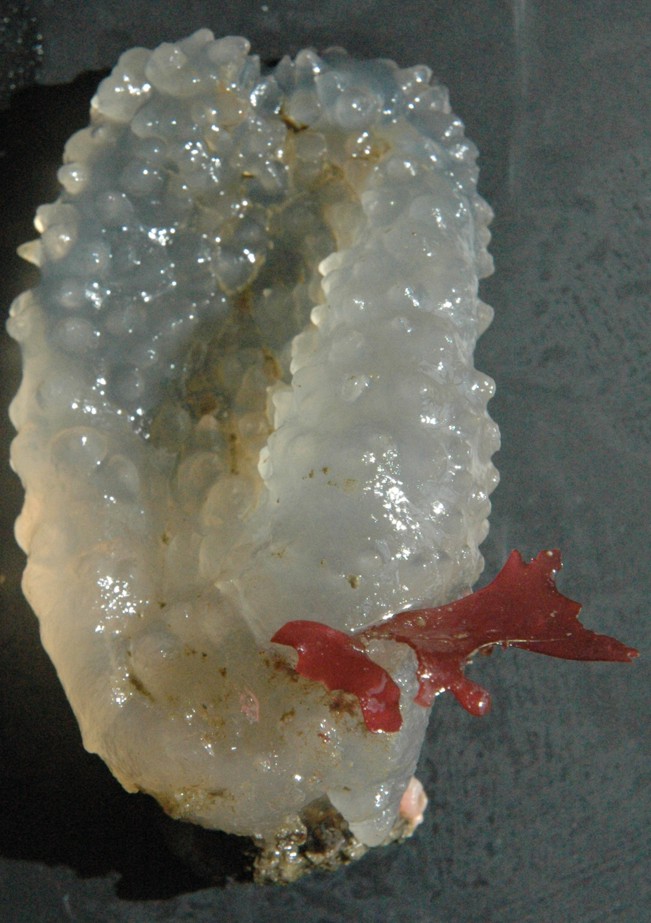Ascidia paratropa (Huntsman, 1912) |
|
 |
|
| Phylum Chordata
Subphylum Urochordata Class Ascidiacea Order Enterogona Suborder Phlebobranchia Family Ascidiidae |
|
| Side view of Ascidia paratropa found off Northwest Island near Rosario Beach, Wa 11 cm. in length | |
| Photo by: Brian Catelli, 06/23/02 | |
How to Distinguish from Similar Species: Molgula pacifica also is large and solitary, has a transparent tunic, and is taller than wide, but M. pacifica usually has foreign material such as algae incorporated into the tunic (Ascidia paratropa does not), has red on the siphons, and has no scattered large papillae as seen on A. paratropa.
Geographical Range: Unga Strait (Aleutian Islands, Alaska) at least to southern Monterey Co.
Depth Range: Rarely very low intertidal, more commonly subtidal, extending to about 80m depth in well-circulated waters
Habitat: Attached to assorted hard substrata
Biology/Natural History: Ascidia paratropa probably breeds only in the summer, and it does not brood its eggs. Its diploid chromosomes complement is 18. It can be hybridized experimentally with A. callosa. The egg envelopes must be removed manually (digesting them off with the enzyme trypsin drastically upsets development). With this precaution about two-thirds of A. callosa eggs and one-half of A. paratropa eggs fertilized by the other species develop into only slightly distorted tadpoles; a few settle and metamorphose to zooids that appear functionally competent except for aberrant guts. An attempt to raise offspring through sexual maturity has not been made yet. The tunic of A. paratropa, glasslike in its transparency, has received some study. It is very largely sea water, the organic matter constituting only .8 percent of tunic wet weight. About half the organic matter is carbohydrate resembling plant cellulose, and about half is protein. Investigation of the brain of A. paratropa shows the presence of neurosecretory cells of the sort characteristic of the Ascidian suborders Aplousobranchia and Phlebobranchia
| Return to: | |||
| Main Page | Alphabetic Index | Systematic Index | Glossary |
References:
Dichotomous Keys:
Marine Invertebrates of the Pacific Northwest Eugene N. Kozloff 1987 University of Washington Press
General References:
Intertidal
Invertebrates of California Robert H Morris, Donald P.
Abbott, and
Eugene C. Haderlie 1992 Stanford University Press.
Scientific Articles:
General Notes and Observations: Locations, abundance's, unusual behaviors, etc.:

Ascidia paratropa, about 8 cm tall.
Collected subtidally
off Sares Head. Photo by Dave Cowles, July 1997

This 6 cm tall individual, with some red algae embedded in the tunic,
was found at about 15 m depth off Sares Head in 2014
Authors and Editors of Page:
Brian Catelli (2002): Created original page
Editors:
Dave Cowles 10-2002, 2005
Hans Helmstetler 11-2002